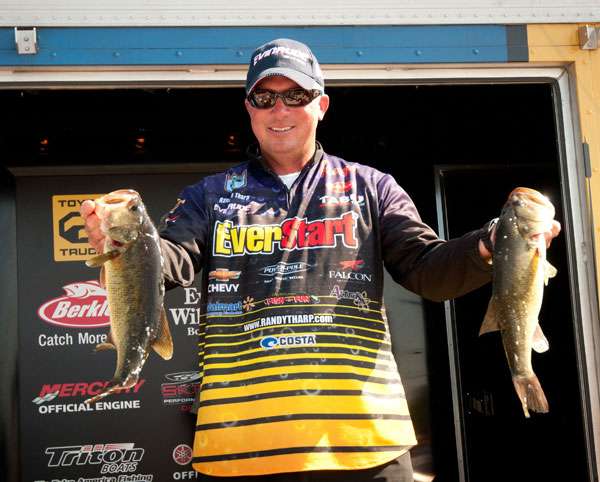
Whenever B.A.S.S. pro Randy Tharp encounters post-frontal conditions in the fall, Tharp knows he needs to make a mental adjustment to keep catching fish.
"You really have to prepare yourself for not getting many bites," says Tharp. "I make my living fishing, so I have to catch them regardless of whether a front comes through or not.
"I know it's going to be tough on everybody, but stay focused and capitalize on the fewer opportunities you get."
The touring pros constantly face the unstable weather patterns of spring and fall, so they're accustomed to making daily adjustments. "It's very rare that we go to a place and fish for seven or eight days and everything stays the same," says Tharp. "Sometimes you might be on something good and have to throw the whole thing out the window and just fish for a few bites.
"Every day I'm on the water, regardless of whether it's a practice or tournament day, I just have to go fishing for that day." Cold fronts affect the fishing during the spring and fall, but Tharp notices fall frontal passages have a more severe impact than spring fronts. "In the springtime, fish have one thing on their mind and that is spawning, so they're going to feed regardless of a front," says Tharp.
Tharp thinks fall cold fronts — especially in late autumn — have a greater impact because the water gets colder. "With each gradual drop in water temperature, it gets harder and harder to catch them," says Tharp.
Because his strength is fishing shallow, Tharp will stick with his strength when a fall cold front occurs. "As the water starts to cool, a lot of the bait likes to get shallow and the bass like to follow them," says Tharp, who usually finds reservoir fish in the backs of creeks and major tributaries. "Regardless of a front coming through, that's not going to change where I'm fishing." Post-frontal conditions will cause Tharp to alter his tactics and presentations because he knows bass become moody.
"The fish will bury down tighter to cover and won't be chasing bait as much," he says. "If you were on a reaction-type bite with a crankbait or spinnerbait, you might have to flip or just fish really slow." Finding shallow cover becomes the key to catching bass after a fall cold front. "If I'm on a body of water full of grass, then that's what I'm going to key on because that's one of my strengths," says Tharp. "But if I'm on Lake Norman or some other place that's full of boat docks or on a lake with wood cover that's shallow in the back of a creek, that's what I'm going to key on."
Tharp's favorite lure for fishing after a fall front is a 1/2-ounce flipping jig (black or brown) tipped with a Zoom Big Salty Chunk or Super Chunk (black/blue flake, blue sapphire or green pumpkin).
The Alabama pro pitches his jig-and-chunk to shallow targets and saturates each piece of cover with multiple presentations. "If the fish are really lethargic, I'll let the jig sit there and shake it a couple of times and maybe hop it a couple of times," says Tharp.
In late fall, Tharp sometimes lets his jig sit in one spot for 10 to 15 seconds.
Originally published October 2011





